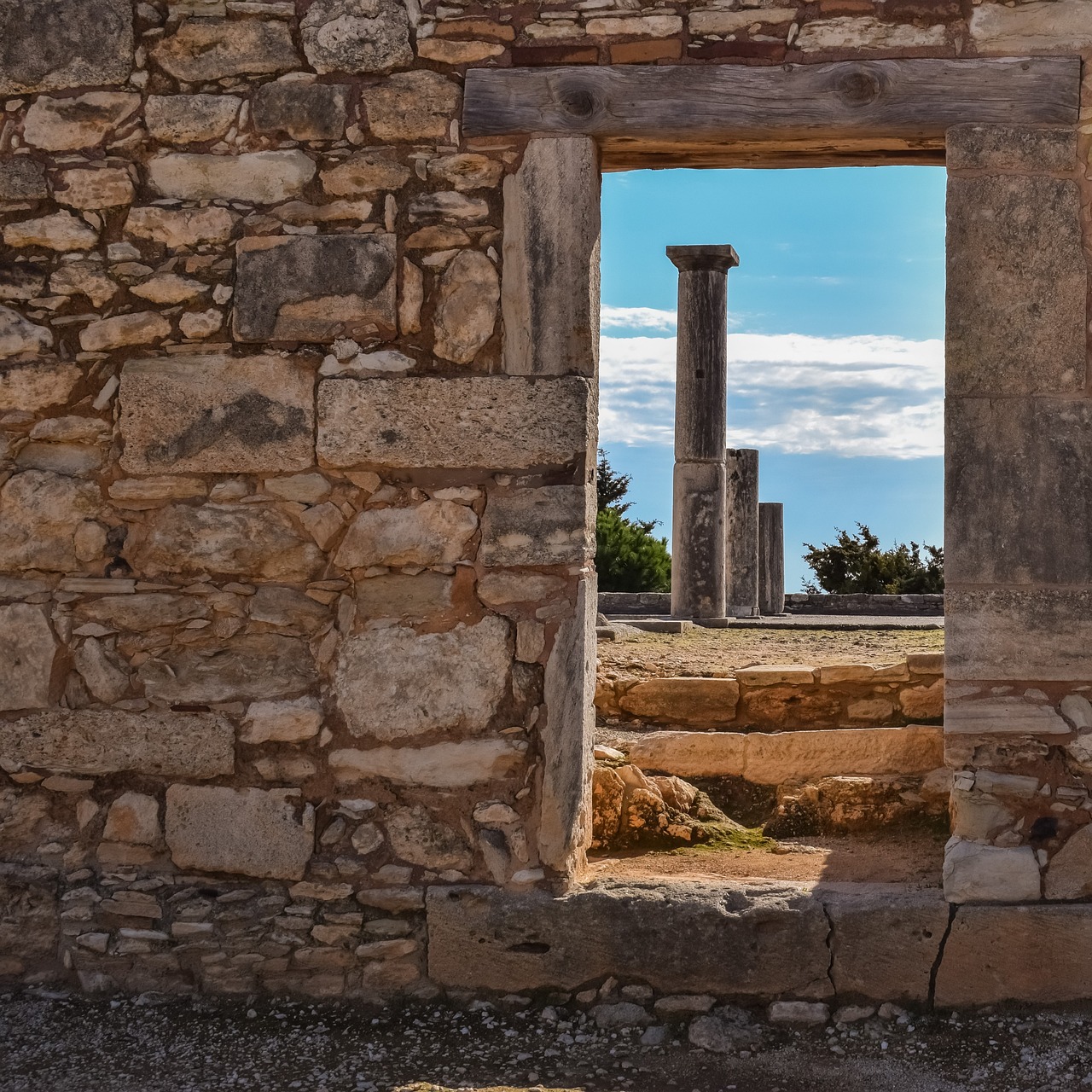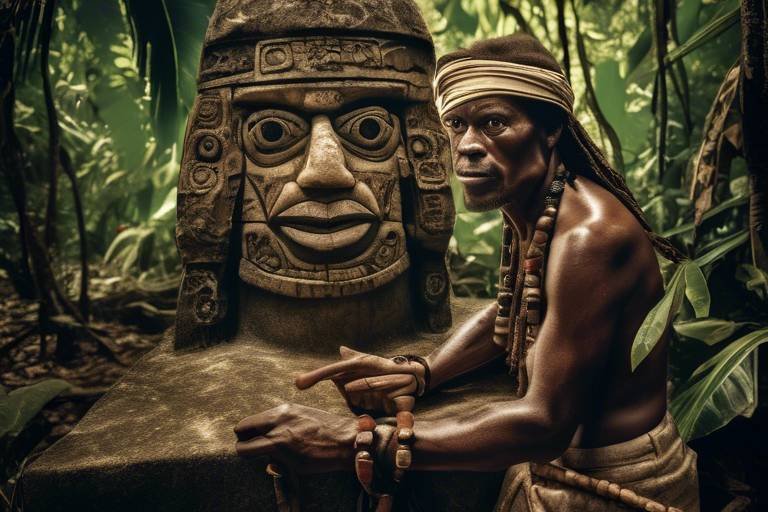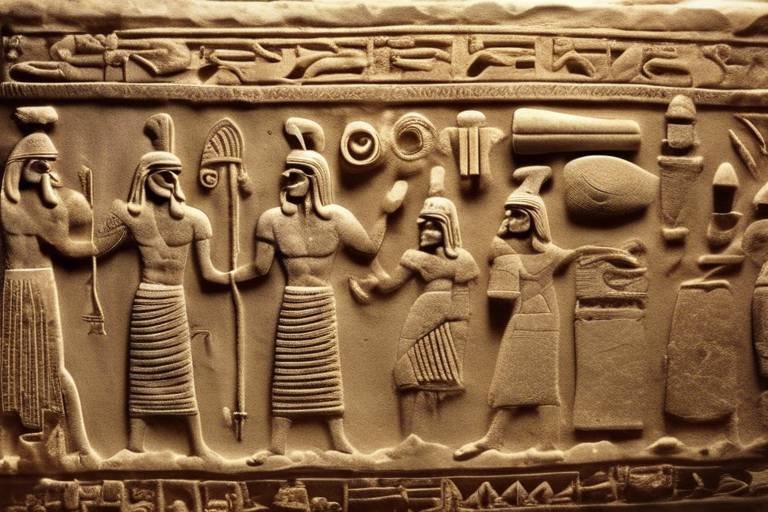The Cultural Richness of the Sumerian Civilization
The Sumerian civilization stands as a testament to the rich tapestry of human culture and innovation that flourished in the ancient land of Mesopotamia. Dating back to the 4th millennium BCE, Sumer was a cradle of civilization, birthing remarkable advancements in various aspects of society that continue to captivate historians and archaeologists to this day.
At the heart of Sumerian society lay a complex web of religious beliefs and practices that permeated every aspect of daily life. The Sumerians worshipped a pantheon of gods and goddesses, each overseeing different facets of nature and human existence. Their elaborate rituals and grand temples served as focal points for communal gatherings and spiritual reverence, reflecting the deep-seated connection between the divine and the earthly realms.
Art and architecture flourished in Sumer, showcasing the creative prowess of its inhabitants. From intricately designed pottery to majestic sculptures depicting mythological figures, Sumerian artistry reflected a keen eye for detail and aesthetic beauty. The towering ziggurats and expansive city walls stood as testaments to the architectural ingenuity of the Sumerians, showcasing their mastery of construction and engineering.
The Sumerians were pioneers in the realm of written communication, developing the cuneiform script as a means of recording their history, laws, and literature. This early form of writing, etched into clay tablets using wedge-shaped symbols, laid the foundation for future writing systems and played a crucial role in preserving the cultural heritage of Sumer for generations to come.
Delving into the social structure of Sumer reveals a society marked by distinct hierarchies and roles. From the ruling elite to the laborers and artisans, each segment of society played a vital role in sustaining the intricate web of daily life. Family bonds were paramount, with kinship ties forming the bedrock of social cohesion and support in Sumerian communities.
Technological advancements were a hallmark of Sumerian innovation, with groundbreaking inventions such as the wheel, irrigation systems, and early mathematical concepts revolutionizing daily life. These pioneering developments laid the groundwork for future technological progress and underscored the Sumerians' ingenuity and practical knowledge.
Trade and commerce thrived in Sumer, facilitated by a network of trade routes that connected distant regions and fueled economic prosperity. The use of standardized weights and measures, along with a sophisticated system of currency, enabled the Sumerians to engage in complex economic transactions and establish themselves as key players in the ancient world of commerce.
The enduring legacy of Sumerian culture resonates through the annals of history, influencing subsequent civilizations and leaving an indelible mark on human progress. The contributions of the Sumerians in art, literature, science, and governance continue to inspire scholars and enthusiasts alike, underscoring the enduring cultural richness of this ancient civilization.

Historical Background of Sumer
The Sumerian civilization, one of the oldest known civilizations in history, holds a treasure trove of cultural richness waiting to be explored. Let's delve into the historical background of Sumer and uncover the fascinating aspects that shaped this ancient society.
The history of Sumer traces back to the fertile lands of Mesopotamia, known as the cradle of civilization. It was in this region, around 4500 BC, that the Sumerians established city-states like Eridu, Ur, and Uruk. These city-states flourished due to their advanced agricultural practices, leading to the rise of a sophisticated urban civilization.
One of the most significant developments in Sumerian history was the invention of writing. The Sumerians created the cuneiform script, a system of wedge-shaped characters impressed on clay tablets. This marked the beginning of recorded history and enabled the Sumerians to document their laws, literature, and administrative records.
The Sumerians were also known for their advancements in mathematics, astronomy, and architecture. Their ziggurats, massive stepped temples, stood as symbols of their religious devotion and architectural prowess. The Sumerian civilization thrived for over three millennia, leaving a lasting legacy that influenced future civilizations in the region.
Q: What were the major achievements of the Sumerian civilization?
A: The Sumerians made significant contributions to various fields, including writing, mathematics, astronomy, and architecture. Their invention of writing, the cuneiform script, revolutionized communication and record-keeping.
Q: How did religion influence Sumerian society?
A: Religion played a central role in Sumerian society, with a pantheon of gods and goddesses governing various aspects of life. Temples were built to honor these deities, and rituals were performed to ensure divine favor and protection.
Q: What was the social structure like in Sumer?
A: Sumerian society was hierarchical, with kings and priests holding significant power. The majority of the population were farmers and laborers, while artisans and merchants played essential roles in trade and commerce.
Q: How did Sumerian advancements in technology impact later civilizations?
A: The Sumerians pioneered innovations such as irrigation systems, the wheel, and early forms of mathematics. These technological advancements laid the foundation for future developments in engineering, transportation, and commerce.

Religious Beliefs and Practices
Exploring the religious beliefs and practices of the ancient Sumerians unveils a world steeped in mysticism and devotion. At the core of Sumerian society were the numerous deities that governed various aspects of life, from agriculture to war. The Sumerians believed in a pantheon of gods and goddesses, each with their own domains and powers. These deities were worshipped through elaborate rituals conducted in grand temples that served as centers of spiritual life.
The Sumerians practiced polytheism, believing in multiple gods and goddesses, each representing different forces of nature or aspects of human existence. Among the most prominent deities were Enlil, the god of wind and storms, Inanna, the goddess of love and war, and Utu, the god of the sun. These gods were revered through offerings, prayers, and ceremonies conducted by priests and priestesses who held significant roles in society.
Temples played a crucial role in Sumerian religious life, serving as places of worship, administration, and community gatherings. These monumental structures, such as the famous ziggurats, symbolized the connection between the earthly realm and the divine. Priests and priestesses performed sacred rites and maintained the temples, ensuring the favor of the gods and the prosperity of the people.
The Sumerians believed in an afterlife, where the souls of the deceased journeyed to the underworld ruled by the goddess Ereshkigal. Funerary practices were conducted to ensure a smooth passage to the afterlife, including burial rites and offerings to honor the departed. The concept of divine judgment and the importance of leading a righteous life were central tenets of Sumerian religious beliefs.
Overall, the religious beliefs and practices of the Sumerians were deeply intertwined with every aspect of their lives, shaping their worldview, social structure, and cultural expressions. The legacy of their spiritual devotion continues to fascinate and inspire scholars and enthusiasts alike, offering a glimpse into the rich tapestry of ancient Mesopotamian civilization.

Art and Architecture
The art and architecture of the Sumerian civilization stand as a testament to their creativity and skill, showcasing a vibrant culture that valued aesthetics and craftsmanship. Sumerian art encompassed various forms, including pottery, sculpture, and monumental architecture, each reflecting the unique characteristics of the society.
One of the most notable aspects of Sumerian art is their intricate pottery adorned with intricate designs and motifs. These clay vessels not only served practical purposes but also acted as canvases for artistic expression, with each piece telling a story of the civilization's daily life, religious beliefs, and cultural practices.
Sculpture was another significant artistic medium for the Sumerians, with statues and reliefs depicting gods, rulers, and mythical creatures. The level of detail and realism in Sumerian sculptures is remarkable, showcasing the sculptors' mastery in capturing human and animal forms with precision and grace.
When it comes to architecture, the Sumerians were pioneers in building monumental structures that served both practical and symbolic functions. The ziggurat, a massive terraced pyramid with a temple at the top, was a prominent architectural form in Sumerian city-states, symbolizing their connection with the divine and serving as a center for religious ceremonies and rituals.
Moreover, the Sumerians excelled in urban planning, constructing intricate city layouts with well-defined streets, public buildings, and residential areas. The architectural achievements of the Sumerian civilization not only reflected their advanced engineering skills but also demonstrated their cultural sophistication and organizational prowess.
In summary, Sumerian art and architecture are a window into the rich cultural heritage of this ancient civilization, showcasing their artistic prowess, technological advancements, and religious beliefs. The intricate designs, skilled craftsmanship, and monumental structures left behind by the Sumerians continue to inspire awe and admiration, underscoring their lasting legacy in the annals of human history.

System of Writing: Cuneiform
Cuneiform, the intricate system of writing developed by the ancient Sumerians, stands as one of the earliest forms of recorded language in human history. The term "cuneiform" itself means "wedge-shaped," describing the distinctive wedge-like impressions made by a reed stylus on clay tablets. This writing system was not only used for administrative and economic purposes but also served as a medium for literature, religious texts, and historical records.
The cuneiform script consisted of a combination of ideograms (symbols representing objects) and phonetic signs (symbols representing sounds), allowing for a complex and versatile method of communication. Scribes, highly esteemed individuals in Sumerian society, underwent rigorous training to master this intricate writing system, which required a deep understanding of grammar and vocabulary.
One of the remarkable aspects of cuneiform is its ability to adapt and evolve over time, spreading beyond Sumer to other civilizations such as Akkad, Assyria, and Babylonia. This widespread adoption of cuneiform facilitated cultural exchange and communication across the ancient Near East, leaving a lasting legacy on subsequent writing systems.

Social Structure and Daily Life
In ancient Sumer, the social structure was highly stratified, with a clear hierarchy that determined one's place in society. At the top were the rulers, priests, and high-ranking officials who held significant power and influence. They were responsible for governing the city-states, overseeing religious ceremonies, and making important decisions that impacted the entire community. Below them were the common people, including farmers, artisans, and merchants, who formed the backbone of the economy through their labor and trade.
Family played a crucial role in Sumerian society, with households typically consisting of extended family members living together. The patriarchal system prevailed, where the eldest male held authority over the family's affairs and decisions. Women, although respected for their roles as mothers and homemakers, had limited rights compared to men. Marriage was an important institution, often arranged by families to strengthen alliances and ensure the continuation of family lines.
Occupations varied widely in ancient Sumer, with individuals specializing in agriculture, craftsmanship, trade, or administrative roles. Farmers worked the fertile land of the river valleys, utilizing advanced irrigation techniques to ensure successful harvests. Artisans excelled in crafting pottery, textiles, and metalwork, creating intricate goods that were highly prized in trade. Merchants facilitated commerce by exchanging goods along established trade routes, contributing to the prosperity of the city-states.
On a daily basis, Sumerians engaged in a range of activities that reflected their values and priorities. Religious rituals and ceremonies were integral to daily life, with offerings made to the gods to ensure prosperity and protection. Education was highly valued, with scribes receiving specialized training in cuneiform writing and mathematics to serve in administrative roles. Leisure activities included music, dance, and storytelling, providing entertainment and cultural enrichment for the community.
Despite the challenges of daily life, such as natural disasters and conflicts between city-states, the Sumerians developed a cohesive society based on shared beliefs and traditions. Their social structure and daily routines laid the foundation for future civilizations, influencing art, literature, and governance for centuries to come.

Technological Advancements
The Sumerian civilization was not only known for its cultural achievements but also for its remarkable technological advancements that laid the foundation for future innovations. One of the most significant contributions of the Sumerians was the development of sophisticated irrigation systems that transformed the arid landscapes of Mesopotamia into fertile agricultural lands. By constructing canals and levees to control the flow of water from the Tigris and Euphrates rivers, the Sumerians were able to support a thriving agricultural economy and sustain their growing population.
In addition to their advancements in agriculture, the Sumerians also invented the wheel, a revolutionary technology that had a profound impact on transportation and trade. The invention of the wheel not only facilitated the movement of goods and people but also led to the development of wheeled vehicles such as carts and chariots, revolutionizing the way goods were transported and accelerating the pace of commerce.
Moreover, the Sumerians made significant strides in the field of mathematics, introducing the concept of numerical systems and arithmetic calculations. They developed a sophisticated system of metrology for measuring quantities and distances, laying the groundwork for future mathematical advancements in the ancient world. The Sumerians' mathematical innovations were crucial for various aspects of their society, including construction, trade, and astronomy.
Another remarkable technological achievement of the Sumerians was the creation of the earliest known writing system, cuneiform. This script, composed of wedge-shaped characters impressed into clay tablets, was used for recording economic transactions, legal documents, and literary works. The development of cuneiform marked a significant leap forward in human communication and paved the way for the preservation of Sumerian history and culture for future generations.
Overall, the technological advancements of the Sumerian civilization were instrumental in shaping the trajectory of human progress and laying the groundwork for future innovations in various fields. From irrigation systems to the invention of the wheel and the development of cuneiform writing, the Sumerians left a lasting legacy of technological ingenuity that continues to inspire awe and admiration to this day.

Trade and Economy
Trade and economy were the lifeblood of the Sumerian civilization, driving prosperity and cultural exchange in the ancient world. The Sumerians were adept traders, establishing extensive networks that connected Mesopotamia with distant lands, facilitating the exchange of goods, ideas, and technologies. Their strategic location between the Tigris and Euphrates rivers enabled them to flourish as a commercial hub, attracting merchants from neighboring regions.
The economy of Sumer was primarily based on agriculture, with fertile lands supporting the cultivation of crops such as barley, wheat, and dates. Surplus agricultural produce was traded both locally and internationally, contributing to the wealth and stability of Sumerian society. The development of advanced irrigation systems, such as canals and dikes, played a crucial role in maximizing agricultural productivity and ensuring a steady food supply.
Trade routes crisscrossed the Sumerian landscape, connecting major cities like Ur, Uruk, and Lagash with distant trading partners. The Sumerians engaged in long-distance trade with regions as far as the Indus Valley and Anatolia, exchanging commodities such as textiles, metals, precious stones, and timber. This vibrant trade network not only enriched the Sumerian economy but also fostered cultural exchanges and diplomatic relations with foreign powers.
Commerce in Sumer was facilitated by the use of standardized units of weight and measures, ensuring fair transactions and promoting trust among traders. The Sumerians developed an early form of writing, cuneiform, which was utilized for keeping records of commercial transactions, contracts, and inventories. This administrative innovation streamlined economic activities and facilitated the growth of trade-based economies in the region.
The Sumerian economy also witnessed the emergence of specialized professions such as merchants, artisans, and scribes, who played essential roles in facilitating trade, crafting luxury goods, and maintaining written records. The availability of a diverse range of goods and services in Sumerian markets attested to the sophistication and diversity of economic activities in the ancient civilization.

Legacy of Sumerian Culture
The legacy of the Sumerian culture is a tapestry of innovation and influence that has woven its way through the annals of history, leaving an indelible mark on the development of future civilizations. The Sumerians, with their advancements in various fields, have laid the foundation for many aspects of modern society, ranging from governance to literature.
One of the most enduring legacies of Sumerian culture is their system of writing, known as cuneiform. This early form of writing not only facilitated record-keeping but also paved the way for the evolution of written communication. The cuneiform script, etched onto clay tablets, preserved the Sumerian myths, laws, and literature for posterity, providing valuable insights into their society and beliefs.
Moreover, the Sumerians' contributions to mathematics have had a lasting impact on the field, with their development of the sexagesimal system influencing modern-day timekeeping and geometry. The concept of dividing the circle into 360 degrees, a legacy of Sumerian mathematics, is still in use today.
On the architectural front, the Sumerians' innovative building techniques, such as the use of mud bricks and arches, have influenced the construction methods of subsequent civilizations. Their ziggurats, towering temple complexes dedicated to the gods, served as architectural marvels and spiritual centers, inspiring awe and reverence.
Furthermore, the Sumerians' advancements in irrigation technology, including the creation of canals and levees, revolutionized agriculture and enabled the growth of urban centers. Their expertise in harnessing the power of water for irrigation laid the groundwork for sustainable farming practices that are still in use today.
In the realm of trade and commerce, the Sumerians' establishment of trade routes and the development of a sophisticated economic system set the stage for the flourishing of commerce in the ancient world. Their use of standardized weights and measures, along with the introduction of the earliest form of currency, facilitated trade and fostered economic growth.
Overall, the legacy of Sumerian culture is a testament to the ingenuity and creativity of a civilization that thrived in the cradle of civilization. Their enduring contributions in various fields continue to shape the world we live in today, serving as a reminder of the rich cultural heritage that has influenced human progress for millennia.
Frequently Asked Questions
- What is the significance of the Sumerian civilization?
The Sumerian civilization holds great significance as one of the earliest known civilizations in human history. It laid the foundation for many aspects of modern society, including writing systems, legal codes, and urban development.
- What were the main religious beliefs of the Sumerians?
The Sumerians believed in a pantheon of gods and goddesses who controlled various aspects of life. They built elaborate temples and conducted rituals to honor and appease these deities.
- How did the Sumerians contribute to the field of art and architecture?
The Sumerians were skilled artisans known for their intricate pottery, detailed sculptures, and monumental architecture. Their artistic achievements reflected their cultural values and craftsmanship.
- What is cuneiform writing, and why is it important?
Cuneiform writing was a script used by the Sumerians, considered one of the earliest forms of writing in human history. It played a crucial role in recording historical events, literature, and administrative records.
- How did the Sumerian social structure function?
The Sumerian society had a complex social hierarchy with distinct roles for different classes of people. Family structure, occupations, and daily routines were influenced by this hierarchical system.
- What technological advancements were made by the Sumerians?
The Sumerians were pioneers in various technological innovations, including the development of irrigation systems, the invention of the wheel, and advancements in mathematics that laid the groundwork for future civilizations.
- How did trade and economy shape Sumerian civilization?
Trade played a vital role in the Sumerian economy, with the civilization engaging in commerce with neighboring regions. The use of currency and the establishment of trade routes contributed to the prosperity of Sumerian society.
- What is the lasting legacy of Sumerian culture?
The legacy of Sumerian culture can be seen in various fields, from literature and law to architecture and technology. Their contributions have had a lasting impact on the development of future civilizations.



















